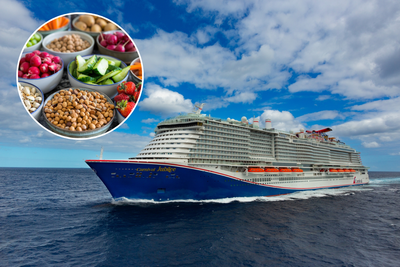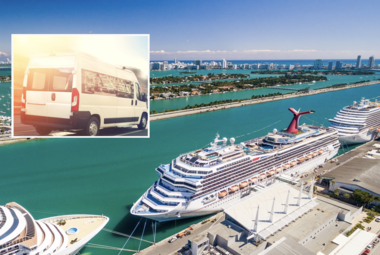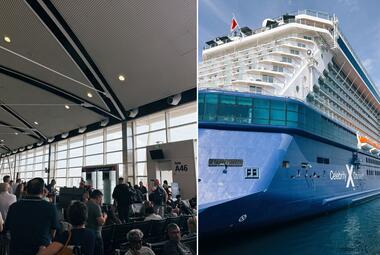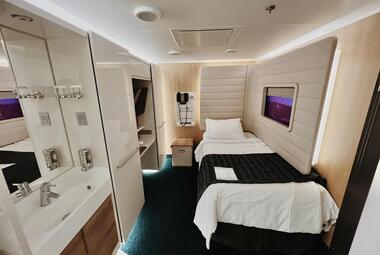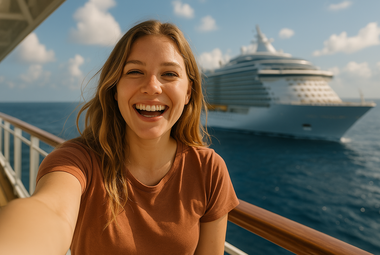From unlimited buffets to multi-course meals in the Main Dining Room, there's no shortage of food on a cruise ship. However, when you are finalizing your packing, you might wonder if you can bring your favorite snack onboard, especially if you're a picky eater or have certain dietary restrictions.
Whatever the reason, while cruise lines have specific rules regarding bringing food onboard, most allow small quantities of non-perishable snacks. Some may even allow alcohol to be brought onboard on embarkation day!
Fresh produce, meats, and other homemade items are often restricted for safety and customs reasons. Don't fear, though—there will be plenty of food to keep you satisfied throughout the cruise!
Here's a guide to help you understand what food can and cannot be brought onboard a cruise ship.
Read more: Top 10 Biggest Cruise Ship Dining Mistakes to Avoid
Can you bring food on a cruise?
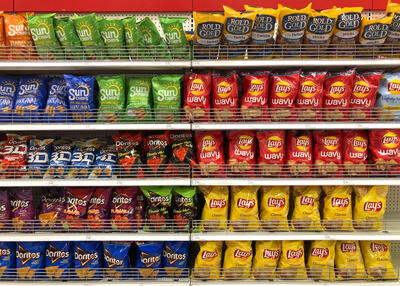
Non-perishable items—think cookies, crackers, chips, pretzels, and energy bars—are usually allowed onboard. According to Carnival's website, "...any food items brought on board must be pre-packaged and unopened. Homemade items or pre-cooked foods are not allowed."
While you can't bring your child's favorite weeknight dinner or homemade snack on your cruise, shelf-stable items are a safe bet. However, it's important that whatever you're bringing be unopened. Instead of digging into your bag of chips en route to the terminal, leave the bag untouched until you're in your cabin.
If the port agents find open food, even if it's non-perishable, it may not be allowed onboard.

So, what should you leave at home? Fresh fruits, cheeses, and meats, as well as cooked products. Cruise ships simply don't have the facilities to store personal food items. While cabins have mini-fridges, they're more like small coolers and aren't capable of properly storing perishable food.
If you're worried about not having accessible snacks in your cabin, bring a few zip-loc bags to store cut-up fruit, french fries, and other convenient food options from the buffet or ship's grab-and-go eateries. Alternatively, take a piece of fresh fruit from the buffet and stash it in your mini-fridge.
Read more: 8 best cruises for foodies on a budget
What about baby food?

Cruise ships don't have baby food or formula available onboard, so you must bring your own if traveling with an infant. There are certain restrictions you must abide by, though.
For example, you cannot bring homemade items, opened jars or containers of food, or pre-cooked food. Moreover, bottle warmers are prohibited.
Passengers sailing with infants may bring pre-packaged and sealed baby food onboard, as well as formula—either powered or liquid in the original container—and nursey or distilled water for powered formula.

It's important to bring plenty of baby food and/or formula onboard, especially if your child isn't eating solid food yet. Moreover, it is advisable to pack enough for the duration of your cruise, plus some extra to account for any potential travel delays returning home.
Aside from food, make sure you pack diapers and other baby supplies and research your cruise line's youth policies. Typically, complimentary programming isn't available for children under a certain age, and some ships do not have toddler-friendly splash zones.
Carnival's Camp Ocean, for example, doesn't accept kids under the age of 2—unless they're turning 2 during the cruise. However, the Night Owls babysitting program is available for children between 6 months and 11 years old, for an extra charge.
Read more: 5 Kids' Cruise Lines the Whole Family Will Love
Alcohol and soda can usually be brought onboard in limited quantities

If cruise lines are strict about what food can be brought onboard, do they have the same policies about drinks? Unfortunately, yes. From specialty coffee to soda and alcohol, cruise lines make a ton of money from drinks. If passengers could bring their own beverages onboard, their profits would decrease.
Even so, most mainstream cruise lines do not outright prohibit guests from bringing drinks onboard. Royal Caribbean, for example, lets each passenger over the legal drinking age bring one 750ml bottle of wine or champagne with them on embarkation day, as well as 12 standard bottles or cartons of non-alcoholic beverages.
Policies vary based on the cruise line, so research your line's rules before purchasing drinks to bring onboard. Norwegian and MSC, for instance, don't allow any beverages to be brought on their ships.
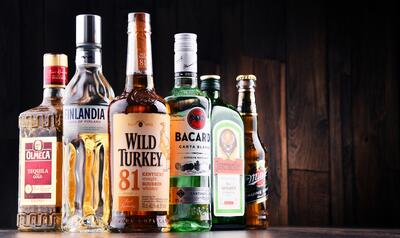
Anything caught will be confiscated by the port agents, and no refunds will be issued. So, it's not wise to try to smuggle prohibited beverages onboard. Truthfully, it often requires more work than it's worth. Since you can't just place a liquor bottle in your suitcase, you will have to spend money on containers to conceal the alcohol.
Read more: How to sneak alcohol on a cruise and why you should not do it
What dining options are available onboard your cruise ship?
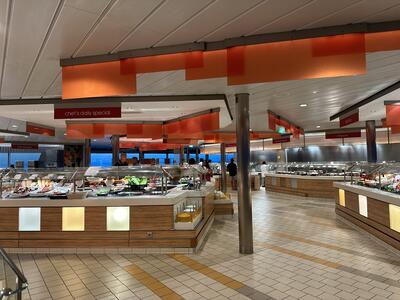
All mainstream cruise lines have a Main Dining Room (MDR) and buffet, except Virgin Voyages. The buffet is open for breakfast, lunch, and dinner each day of your voyage, so you can avoid the lengthy multi-course meal in the MDR. If, however, you're seeking a more traditional cruise experience, the MDR offers a more elegant service.
The best part? All meals in the MDR and buffet are included in the cost of your cruise. Depending on the cruise line and ship, there may be a few other included eateries. Carnival, for example, has BlueIgauana Cantina and Guy's Burger Joint on most ships, which dish up fresh Mexican fare and juicy burgers for no extra charge.
However, there are a few upcharge restaurants onboard that typically specialize in a single cuisine or cooking style, from Italian to Japanese and seafood. Though not included, specialty restaurants offer a unique dining experience and often feature higher-quality ingredients, as well as a more intimate atmosphere.
Read more: Your really dumb cruise ship dining questions answered
What's different about Virgin Voyages?

Virgin Voyages is an adults-only cruise line, so all passengers must be 18 to sail. That's not the only thing that makes Virgin unique, though.
They strayed from the traditional cruise ship dining experience and got rid of large dining rooms and buffets. Instead, their ships feature a variety of specialty restaurants with no additional cover charges. Virgin's vessels have over 20 different eateries onboard, ranging from Korean BBQ to Mexican, Italian, and more.
In lieu of a buffet, you'll find The Galley. While The Galley has prepackaged grab-and-go items, that's the closest you'll get to a self-serve buffet. Instead, you can order freshly prepared food from one of the stalls dishing up paninis, tacos, bento boxes, salads, all-day breakfast fare, and more.


